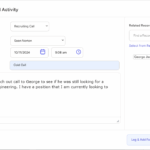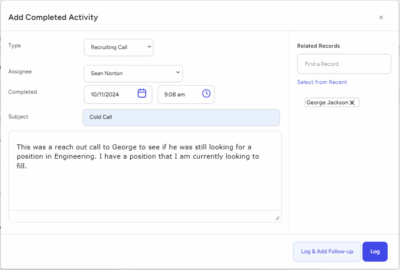All recruiting is not equal. Corporate recruiting is different from the process of sourcing and hiring in the nonprofit sector. Nonprofit recruitment is more challenging and differs from for-profit efforts to find talent in three key ways. Here’s why nonprofit recruiting can be so difficult, and how hiring teams can improve their chances of success.
Understanding the challenges of Non-Profit recruitment
A 2019 study from the Johns Hopkins Center for Civil Society Studies reports that nonprofit organizations are a major economic force in the United States, accounting for up to 15% of all private jobs, with 12.3 million paid workers. Yet these organizations are facing significant economic and competitive challenges, as federal rules limit tax incentives for charitable giving by individuals, and vouchers and tax credits extend to for-profit firms that will “enter, and ultimately dominate, fields in which nonprofit providers formerly held sway.”
Against these economic challenges lies an unprecedented low unemployment market that makes recruiting talent difficult across the board. Nonprofit recruitment has always been more difficult over for-profit recruiting, but today the challenges are greater. They include:
- Nonprofits work with a limited recruiting budget. This affects every part of the hiring process. Nonprofits could be limited to advertising only on free job boards; they may not be able to hire a third-party staffing agency to help them source candidates. This means that these jobs are more difficult to find to the time-pressed job candidate.
Nonprofit organizations may not even have an internal team available to find candidates, instead tacking the job onto an existing role, such as a payroll or human resources manager. The problem, of course, is that today’s historic unemployment levels make hiring for most roles a full-time job.
Finally, nonprofits struggle to attract many candidates with top credentials simply because their salary structures aren’t as lucrative as those of for-profit companies. When matched dollar for dollar against a for-profit competitor, nonprofit recruitment simply falls short.
- Nonprofits rarely have a standardized hiring calendar. This makes building a consistent funnel of qualified candidates much harder since each hiring process becomes a cold start. This means recruiting momentum simply cannot build in today’s challenging job market, which makes an already difficult task even harder. The only good news to report is that all nonprofits seem to be struggling in this way. The Philanthropy Journal News says 70% of upper to midrange nonprofits citing recruitment and retention as their top challenge this year.
- Nonprofits often hire with a focus on inclusion and diversity. Since nonprofit organizations typically set hiring goals with an eye towards building diverse teams of professionals, this can result in a narrower hiring pool. This makes it even more important to build and nurture strong networks and connections.
- Nonprofits often look internally for talent instead of scouting for new external candidates. It’s easier and financially less risky to look internally for talent or to source from a ready-made pool of workers already in the nonprofit community you serve. In these cases, the job ad may never go public. The problem is that the approach is incestuous in nature, relying on existing talent but failing to attract new workers into the field. If an effort is not made to build a pipeline of new workers, nonprofits could continue to struggle to replace employees lost through attrition due to retirement. Recruitment strategies for nonprofit organizations must continue to fill the candidate pipeline with fresh talent to keep their mission moving forward.
How should nonprofits continue to compete against for-profits for top talent, in the face of all of these challenges?
Recruitment strategies for Non-Profits
The good news for nonprofit organizations is that millennials, who will make up 75% of the workforce by 2025, are actively looking for socially responsible employers, according to Talent Economy. Baby boomers are retiring in droves, making the millennial population the strongest force in the candidate economy.
Nonprofits naturally give this younger population exactly what they crave: a mission. The article states, “For businesses that want to stay competitive in the hiring market, the first thing to know is that millennials are not looking for the same things from their employers that the boomers were.”
This is exactly why recruitment strategies for nonprofits should emphasize their overarching mission and the constituents they serve. Talent Economy says 75% of millennials would take a pay cut to work at an organization whose mission they can stand behind.
Nonprofit HR suggests that many organizations miss the boat in their efforts to attract candidates precisely because they fail to capitalize on a strong employee value proposition. Nonprofit recruitment strategies should emphasize the value, rewards, and benefits of working for your organization. They also suggest coupling this emphasis with a proactive and strategic sourcing effort that seeks external candidates for future hiring needs. It’s a rare sight to see a nonprofit organization at a job fair, but the article suggests successful recruitment strategies for nonprofits should include consistent efforts to build a future pool of applicants to call upon when a hiring need arises.
Nonprofit organizations should also take a page from the efforts of for-profit firms to recruit and hire talent. Recruiting Times suggests the following five methods for recruiting candidates, whether your organization is nonprofit or for-profit:
- Increase your pool of candidates by proactively searching for talent.
- Increase retention by matching the exact job to the exact candidate credentials.
- Be known as a great employer. Nonprofits can build their brand by using social media to promote their organization not just to potential donors but also to potential job candidates.
- Involve employees in your efforts to find the perfect candidate. Ask internal teams to share job ads with their social networks.
- When possible, offer better pay and perks than the competition.
Nonprofit organizations must make hiring a part of the culture. Department heads should continually be on the lookout for external fresh talent to broaden the hiring pool or your organization long-term. These organizations can also benefit from technology to help streamline and systematize a disjointed hiring process.








